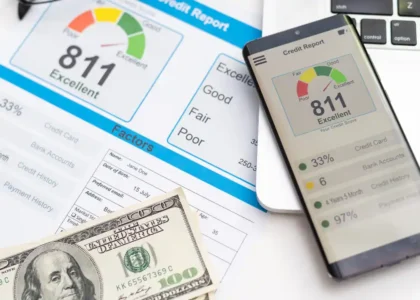Investing is one of the most effective ways to build wealth over time, but the key to long-term financial success lies in how you manage your investments. One of the most important strategies to consider is creating a diversified portfolio. A diversified portfolio helps balance risk, maximize returns, and offer a safety net during times of economic uncertainty. Whether you’re a beginner investor or someone looking to refine their strategy, understanding how to diversify your investments is crucial to achieving your financial goals.
Why Creating a Diversified Portfolio is Crucial
In today’s ever-changing financial landscape, it’s tempting to invest in a single asset class like stocks or bonds. However, this concentration can leave you exposed to market fluctuations, economic shifts, and unexpected events. That’s where diversification comes in.
By spreading your investments across different types of assets, industries, and geographical areas, you’re reducing the impact of any one loss on your entire portfolio. This strategy is crucial for both mitigating risk and enhancing potential returns. Diversification ensures that even if one sector or asset class underperforms, others in your portfolio may thrive, helping to balance things out.
What Does a Diversified Portfolio Look Like?

Creating a diversified portfolio means including a mix of investment types such as:
- Stocks: Companies’ shares provide growth potential but come with higher risk.
- Bonds: Debt securities that offer more stability and steady returns.
- Real Estate: Investment in properties or REITs for steady cash flow and long-term appreciation.
- Commodities: Investments in tangible assets like gold, silver, or oil to hedge against inflation.
- Cash and Cash Equivalents: Safer, low-yield assets that provide liquidity and stability.
Example of a Diversified Portfolio:
Here’s an example of how a diversified portfolio might look for a moderate-risk investor:
- 40% in stocks (domestic and international)
- 30% in bonds
- 20% in real estate (via REITs)
- 10% in cash or cash equivalents
This allocation ensures that the investor is not overly reliant on any single asset class. It offers growth potential while reducing exposure to volatility.
Steps to Create a Diversified Portfolio
Now that you understand the importance of diversification, let’s break down the steps you can take to create your own diversified portfolio.
1. Assess Your Risk Tolerance
Before diving into diversification, it’s important to assess your risk tolerance. Are you comfortable with potential market fluctuations, or do you prefer a more stable, lower-risk approach? Your risk tolerance will largely determine your asset allocation.
- High-risk tolerance: More stocks, emerging markets, and commodities.
- Moderate-risk tolerance: A balanced mix of stocks, bonds, and real estate.
- Low-risk tolerance: More bonds, cash, and stable investments like blue-chip stocks.
2. Choose Your Asset Classes: Creating a diversified portfolio

Based on your risk tolerance and investment goals, decide which asset classes you’d like to include in your portfolio. For example, if you’re a young investor with a long time horizon, you might allocate a higher percentage to stocks for growth. If you’re closer to retirement, you may lean towards bonds for more stability.
3. Spread Your Investments Across Sectors
Diversification isn’t just about spreading money between different asset classes; it’s also about distributing it across different sectors of the economy. This could include:
- Technology
- Healthcare
- Energy
- Consumer Goods
- Financial Services
Each sector behaves differently during market cycles. By investing across a range of industries, you’re ensuring that your portfolio isn’t overly exposed to the downturns of any single sector.
4. Include International Investments

International diversification offers an additional layer of protection. While the U.S. economy might experience a downturn, other markets around the world might be thriving. Including international stocks, bonds, or real estate can help you take advantage of global growth and minimize risks tied to domestic events.
5. Monitor and Rebalance Your Portfolio
Creating a diversified portfolio is not a one-time task. Over time, some investments will outperform others, causing your portfolio to become unbalanced. Rebalancing your portfolio periodically (e.g., once a year) ensures that your investment allocation aligns with your goals and risk tolerance. This process may involve selling some assets and purchasing others to maintain your desired balance.
Common Mistakes to Avoid: Creating a diversified portfolio
While diversification is a powerful strategy, there are a few common mistakes that investors often make:
- Over-diversification: Spreading yourself too thin across too many investments can lead to a portfolio that’s difficult to manage and monitor.
- Lack of Research: Diversifying blindly without understanding the assets you’re investing in can lead to poor decisions. Always do your due diligence.
- Chasing Past Performance: Investing in asset classes simply because they’ve performed well in the past can be risky. Always focus on your financial goals, not past trends.
Actionable Tips for Success

- Start Small: Begin with a modest investment and gradually expand your portfolio as you learn more about different asset classes.
- Stay Consistent: Stick to a regular investment schedule, such as monthly contributions, to take advantage of dollar-cost averaging.
- Use Low-Cost Index Funds or ETFs: These funds provide broad market exposure and are often a cost-effective way to diversify your portfolio.
- Consult a Financial Advisor: If you’re unsure about asset allocation or diversification, consider seeking professional advice tailored to your specific needs.
Conclusion
Creating a diversified portfolio is an essential strategy for anyone looking to build wealth and secure their financial future. By balancing risk, spreading investments across various asset classes, and monitoring your portfolio, you can maximize your chances for long-term financial success.
At GetCashVibe, we believe in empowering you to make informed financial decisions. Whether you’re just starting out or looking to refine your investment strategy, our resources can help you achieve your goals.
Discover smarter ways to invest and grow your portfolio! Visit GetCashVibe today for more expert tips.






